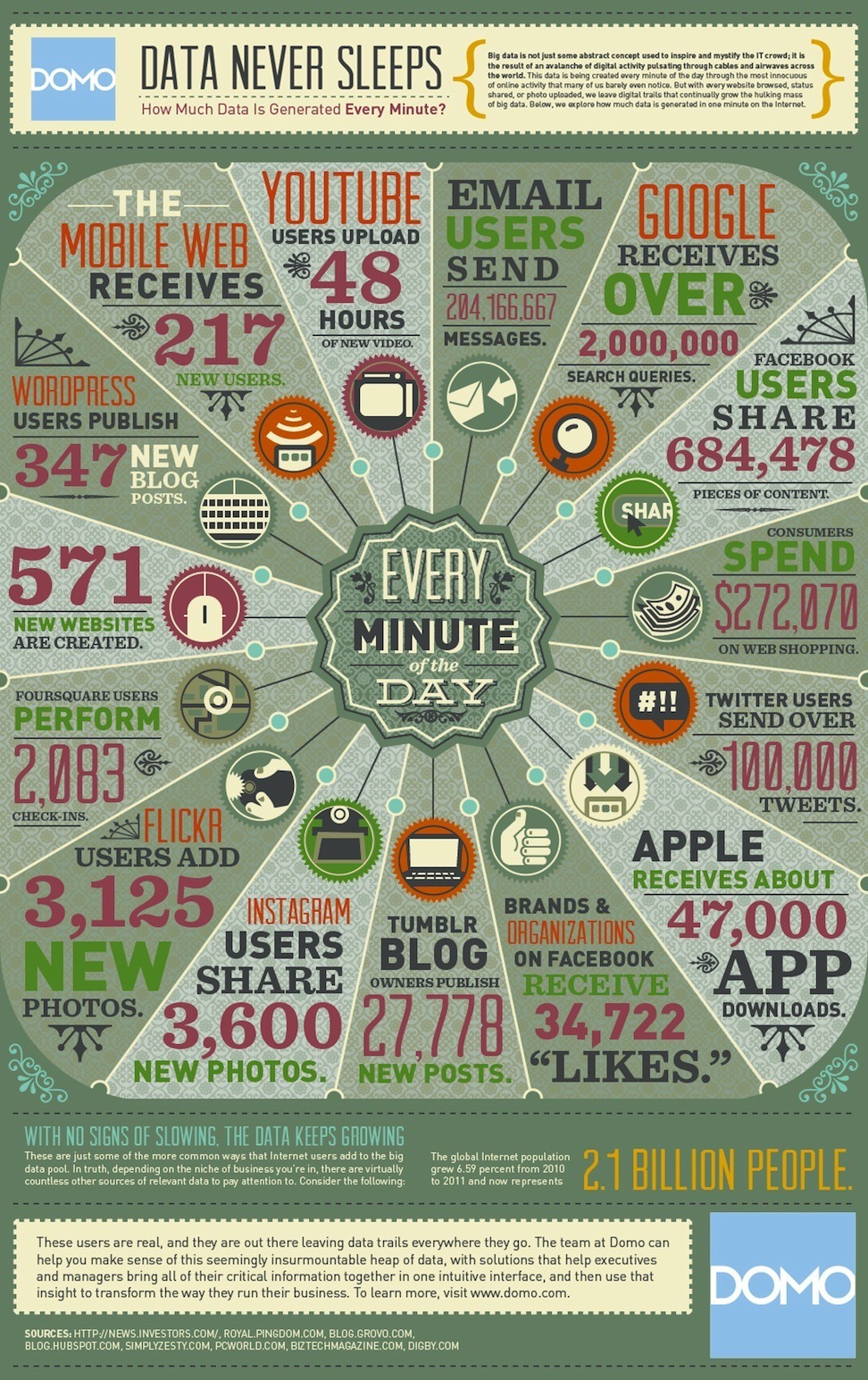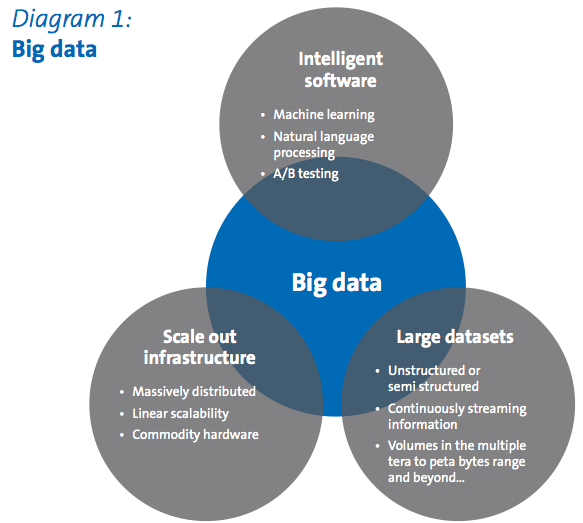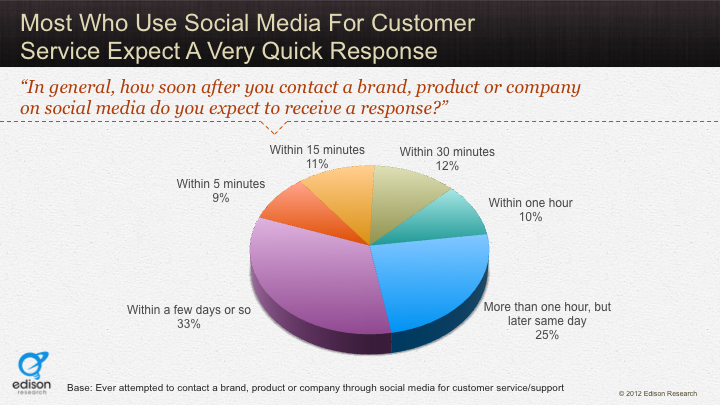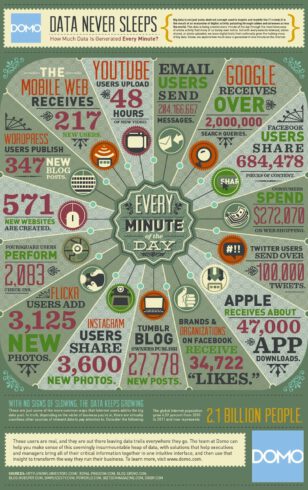Identified as one of the major trends impacting the hotel marketing industry, among many other industries, big data is already playing an important role in how travel organizations are shifting their efforts.
Many people think it’s a “technology thing” when it’s really about business processes and intelligence to better deliver the customer promise. What is big data all about and how can we better understand the phenomenon?
An easy way to memorize it is to consider the four Vs of big data: Volume, Variety, Velocity, and Veracity.
1. VOLUME
It boggles the mind to think about how much content is created on a daily basis, even on an hourly basis. Better yet, take a look at this infographic that depicts what takes place every minute on the internet:

With so much information circulating on external platforms, it becomes difficult to make sense of it all specially when brands attempt to reconcile this level of data with their internal data.
That is, data provided through points of sales or traditional channels of distribution, i.e. call centre, web site, on premises, newsletters, customers relations, etc. Thus the challenge here is akin to drinking from the fire hose or, to put it differently: how does one make sense of the information, transforming big data into smart data?
2. VARIETY
Big data is not just about volume, though. Another key component is the variety of data that stems from all this easily accessible technology, both in terms of cost and ease-of-use. It’s now estimated that organizations can count on only 20% of structured data, against 80% of unstructured data.
Think of structured data as your hotel Property Management System (PMS), your web or blog’s Content Management System (CMS), or your Customer Relationship Management (CRM) system. Ideally, brands already capture loads of data on customer preferences at various points of contacts, turning this into customer intelligence to propel a better experience, research and develop new or improved products and services.
So what’s unstructured data, then? Everything else, basically. Think of:
- Questions or comments answered on Facebook, Twitter, Linked, or any other social platform where a travel brand has a presence.
- User-generated content (UGC) platforms such as TripAdvisor, Yelp and other sites and forums where consumers discuss your brand and where your e-reputation may be in question.
- Any and all interactions on third-party sites, from tour operators to inbound receptives to online travel agencies (OTA) and anyone in between, including travel agents, offline or online.
- Emails, photos, videos, testimonials exchanged either directly with the brand or one a shared platform.
- Different devices where customers interact with a brand: desktop, laptop, mobile, tablet, iPod, etc., through a mobile site or a mobile application.

turning towards a smarter travel experience”, June 2013.
3. VELOCITY
Not only do travel brands have to deal with enormous quantities of data that are most often unstructured, a third key component lies in speed of responsiveness, also referred to as velocity. How do you send the right offer to the right person, at the right moment when he or she arrives at your destination, for example?
What if someones checks-in to your hotel, is disappointed with the room and decides to tweet about it rather than call front-desk? This aspect came into light with the most recent survey conducted by the Social Habit in the Fall of 2012, finding that 42% of customers active on social media expect an answer from a brand within the hour!

A challenge that arises from the velocity consideration is how travel organizations reorganize their business processes in order to be as nimble and flexible as can be.
In the travel business, airlines are perhaps the most advanced in this regard, for example with their dynamic revenue management, allowing to shift pricing according to complex algorithms based on real-time inventory and near-real-time customer online behaviors.
From a customer experience standpoint, how airlines react to incidents such as the Icelandic volcano or major weather crises is also an excellent example of how fast information circulates. Case in point: when American airlines suffered an important glitch this past April, grounding its entire fleet for many hours, customers took over to Twitter for information.
To a point where information given via Twitter was faster than gate agents who were not always kept in the loop, thus creating frustration and a bad overall customer experience.
In terms of business intelligence, many hoteliers and industry partners can’t rely anymore on reports provided by their destination management organizations (DMO) since it is often a couple of months old by the time it gets to them.
With last-minute bookings becoming the norm, intelligence therefore requires a near-real-time aspect in order to be useful to the restaurant owner or hotelier.
4. VERACITY
At the confluence of the three above considerations comes a final aspect, not always mentioned when it comes to big data: veracity. Or truthfulness and accuracy of data, given the context, the variety of communications touch points and the speed at which things happen. Traditionally, brands would clean up their databases on a yearly basis, if that often. This is no longer sufficient.
An analysis of how people browse for a destination online must be taken into context to understand if there is an unusual or newsworthy event that may be influencing the search patterns. Not doing so might lead marketers to think their SEM campaign is working well while results may be completely random and unrelated.
For other organizations, veracity may be linked to identifying their best customers, using traditional methods such as RFM (recency, frequency, monetary) or BCM (best customer model), or by continuing this analysis in the context of big data, looking at external interactions, in particular within unstructured data.
CHALLENGES AND OPPORTUNITIES
In its most recent report, At the Big Data Crossroads: turning towards a smarter travel experience, Amadeus identifies a series of usages for big data in the travel industry: revenue management, distribution, travel management, internal operations, financial performance and investment management.
There are interesting examples and case studies featuring Hipmunk, Kayak, Amadeus and Marriott, among others, helping to better understand how some well-known companies are embracing these challenges and incorporating its usages in their business processes.
Is your brand or organization doing something about big data? Let me know by commenting in the section below.










Leave a Reply